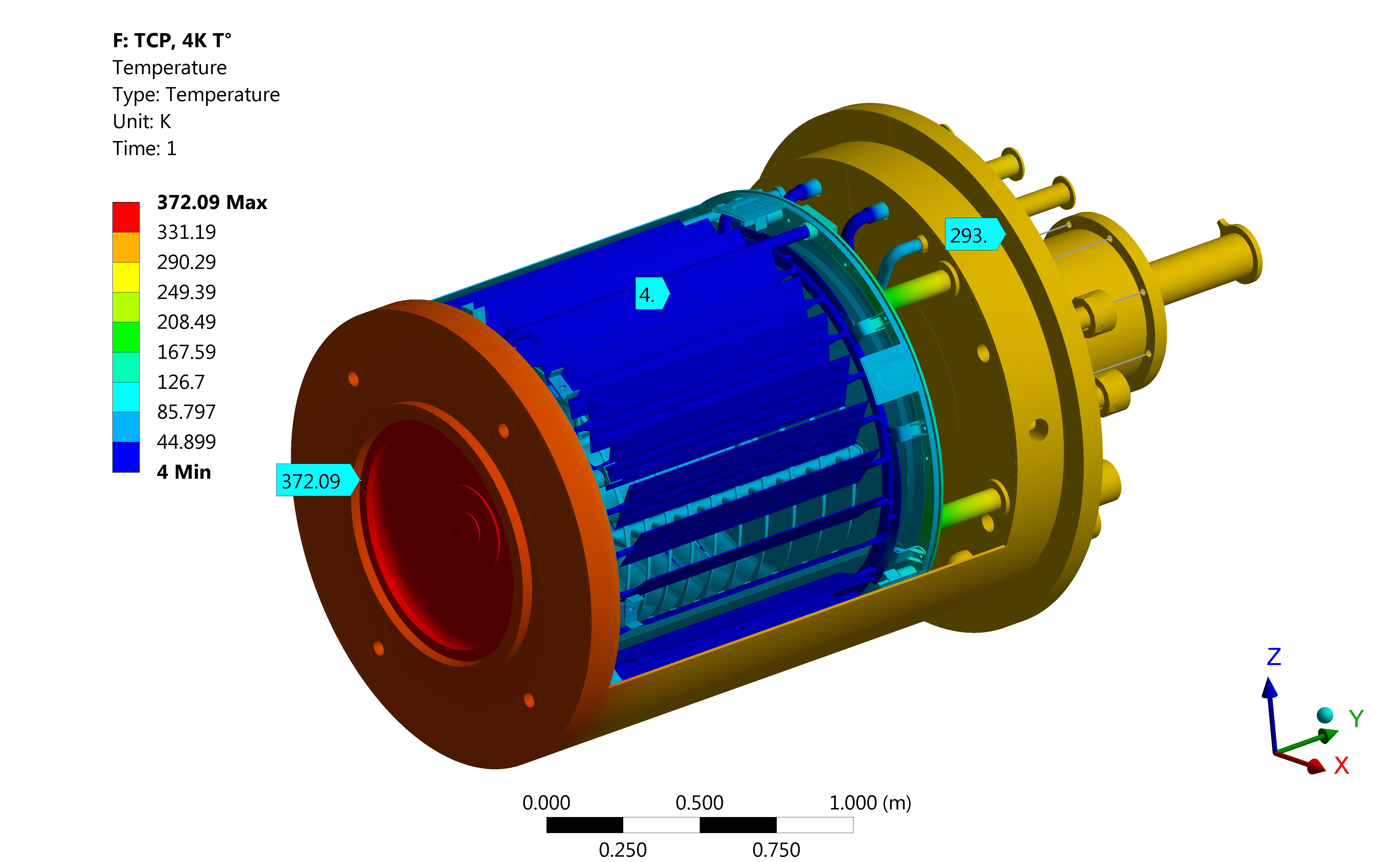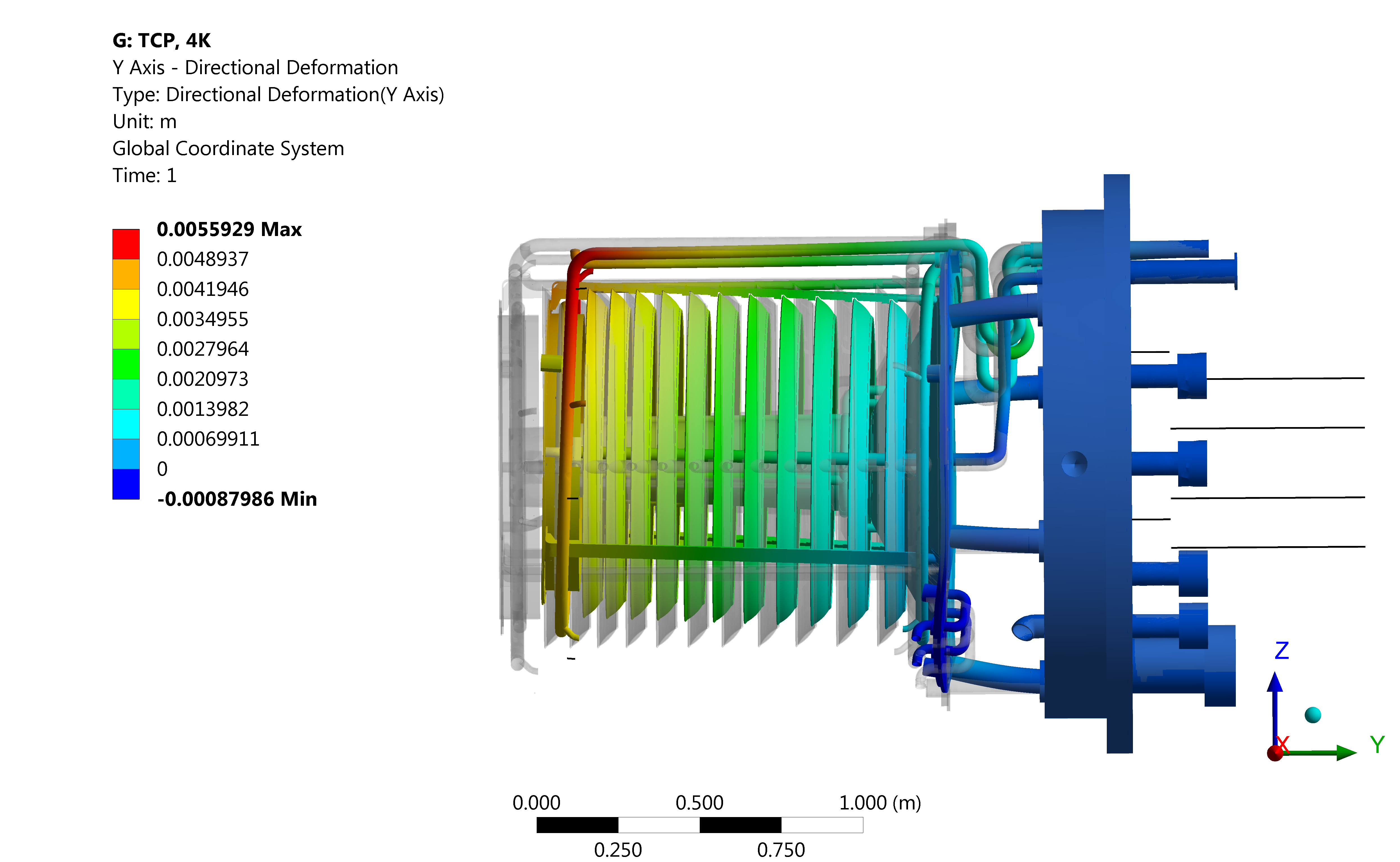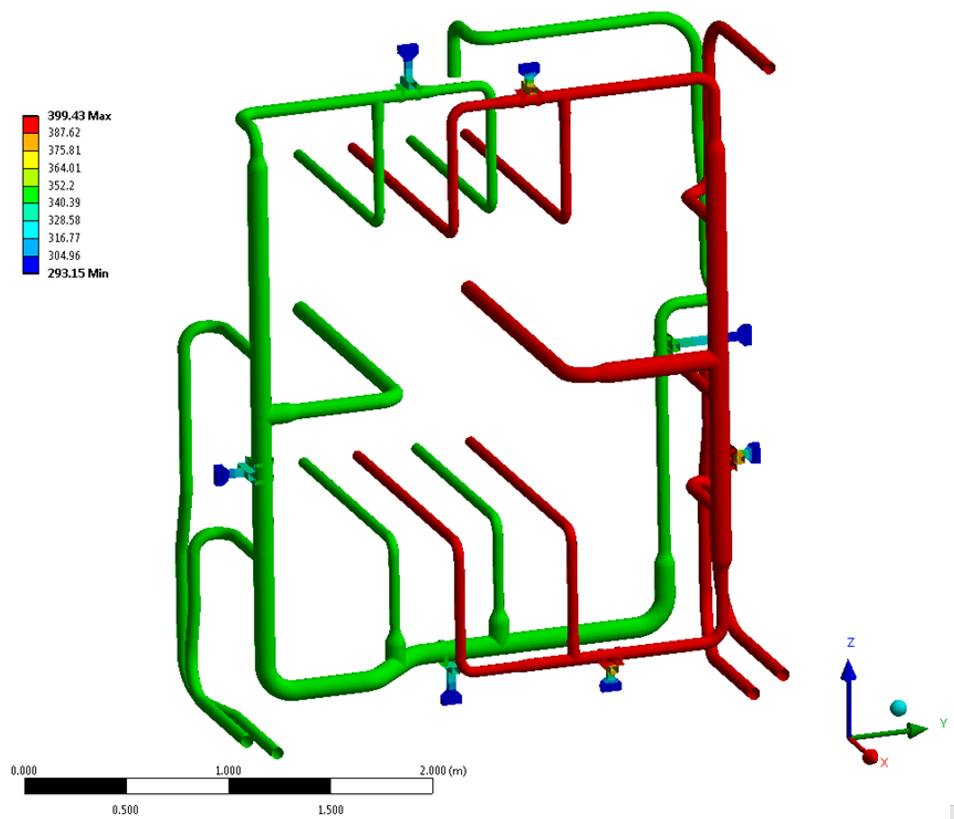Purposes of thermal computation:
We assist you to:
- Calculate the temperature of a component undergoing given thermal loads (conduction, convection, radiation…);
- Combine thermal loads to mechanical loads and estimate the mechanical strength of your system while satisfying the current norms;
- Predict the behaviour of a structure under extreme thermal loads such as a fire load, thanks to modelling and a normative environment.

Definition of a temperature cartography
From the input data (thermal loads), the temperature profile inside a component can be defined using computational fluid dynamics (CFD) or via a thermomechanical computation (FEM). For example, it will be possible to compute heating or cooling of a component. This temperature cartography can then be used as an input piece of data to verify the mechanical strength of a component.
Thermomechanical computation
Coupling of thermal and mechanical loads. When the temperature conditions of a component have a direct influence over its mechanical behaviour, a thermomechanical computation makes it possible to validate the proper mechanical strength of a component. According to the current norm, it may be necessary to perform a ranking of the constraints (primary/secondary) to correctly develop the design and its dimension.
Forecast the behaviour under extreme thermal loads
In case of accidental thermal conditions, the method to follow to validate the mechanical behaviour of a component by simulation may seem difficult. We can guide you to define the norm to refer to and how to simulate this extreme load.
Custom-made
Definition of the need: norms, load situations, etc.

Follow-up
Regular progress meeting, Desktop sharing, etc.

Business fields
Aeronautical, automobile, defence, nuclear, manufacturing

Software tools
ANSYS, LS-Dyna, ABAQUS, NX NASTRAN, CATIA, SolidWorks
You have a project ?
Please contact us for all requests concerning your various projects. The Phimeca team will analyse your needs and come back to you with the necessary support.
